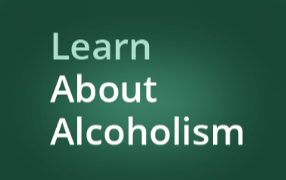Alcoholism Facts
Alcoholism Facts Reveal Pervasive Health Concern
Alcohol consumption has a dramatic impact on the health and well-being of those who drink and the lives of family and friends they touch.
While most people are safe and responsible drinkers, statistics show that the minority who consume excess quantities on a regular basis have an impact that “ripples outward to encompass their families, friends, and communities,” according to information published by the National Institute on Alcohol Abuse and Alcoholism (NIAAA).
There are abundant, compelling alcoholism facts that point to the health risks and impact of the disease. Here are some highlights.

Alcoholism Facts
- More than 100,000 U.S. deaths are caused by excessive alcohol consumption each year. Direct and indirect causes of death include drunk driving, cirrhosis of the liver, falls, cancer, and stroke.
- 48 percent of persons aged 12 and over in the U.S. are drinkers Which translates to an estimated 109 million people.
- Nearly 18 million Americans (8.5 percent of adults_ meet the diagnostic criteria for alcohol abuse or alcoholism. For diagnostic criteria from the American Psychiatric Association’s Diagnostic and Statistical Manual of Mental Disorders (DMV-IV), click here.
- Alcohol abuse and dependence is more common among males than females and decrease with aging.
- The progression of alcoholism appears to be faster in women than in men.
- More than one-half of American adults have a close family member who has or has had alcoholism.
- Approximately one in four children in the U.S. under 18 years old is exposed to alcohol abuse or alcohol dependence in the family.
- Alcohol is the top drug of choice for children and adolescents.
- Each day, 7000 children in the U.S. under the age of 16 take their first drink.
- Children of alcoholics are significantly more likely to initiate drinking during adolescence and to develop alcohol use disorders.
 Approximately 20 percent of persons aged 12 or older participated in binge drinking at least once in the 30 days prior. Binge” drinking means having five or more drinks on one occasion.
Approximately 20 percent of persons aged 12 or older participated in binge drinking at least once in the 30 days prior. Binge” drinking means having five or more drinks on one occasion.- The highest prevalence of binge and heavy drinking was for young adults aged 18 to 25, with the peak rate occurring at age 21.
- More than 35 percent of adults with an alcohol problem developed symptoms such as binge drinking by age 19.
- Alcohol–related crashes (i.e., those in which a driver or pedestrian had a blood alcohol concentration greater than zero) account for 41 percent of all fatal car accidents.
- Alcohol-related motor vehicle crashes kill someone every 31 minutes and non-fatally injure someone every two minutes.
- The economic costs of alcohol abuse in the U.S. are estimated to be approximately $185 billion annually.
What is Alcoholism?
Alcoholism is defined as when a person’s relationship to alcohol becomes the defining force in his or her life, thereby disrupting home life, work-life, education, social activities, and relationships. Problem drinkers are often referred to as heavy drinkers or sometimes “alcoholics” who drink large quantities of alcohol on a regular basis.
Alcoholism can affect anyone regardless of race or gender. A family history of alcoholism increases the risk of becoming an alcoholic at some point in time by seven times-thus alcoholism facts show that alcoholism is a disease. Alcoholism can have effects on the person’s physical, mental, and emotional well-being.
Is Alcoholism Treatable?
Alcoholism is treatable, but not curable. Treatment for alcoholism can occur in both outpatient and inpatient settings depending on the severity of the disease. Effective treatments include medications, counseling/behavioral therapies, social support programs, and mutual-support groups.
Those suffering from alcoholism often require long-term treatment in order to overcome this addiction.
Alcoholism is treatable with medications such as disulfiram (Antabuse), naltrexone (Revia), and acamprosate (Campral). Disulfiram interferes with how enzymes break down alcohol in the body, causing unpleasant reactions when even small amounts of alcohol are consumed. Naltrexone blocks opioids in the brain, reducing cravings and decreasing the pleasure associated with drinking. Acamprosate is thought to reduce irritability and insomnia that can occur when stopping chronic heavy drinking.
The best treatment for alcoholism is a combination of medication and counseling/behavioral therapies such as cognitive-behavioral therapy (CBT) or brief interventions specifically targeted to help problem drinkers.
The withdrawal phase that individuals experience when they stop drinking is often intense, including nausea, tremors, and fatigue; it can be fatal if not properly managed by medical professionals.
Symptoms of Alcoholism
Symptoms that suggest an individual may be moving toward developing an alcohol problem or becoming an alcoholic include
- Using it as a “social lubricant”
- Feeling guilty about drinking
- Losing interest in other activities; constantly thinking about drinking
- Having financial problems because of drinking (e.g., bills go unpaid)
The Dangers of Alcoholism
Heavy drinkers risk many complications that can harm their health, including
- Tolerance. This means the person needs more alcohol to feel the effects or have a “good time.”
- Withdrawal symptoms if they attempt to stop drinking. These include trembling hands, sweating, nausea, and anxiety.
- Hallucinations (when people see things that aren’t there)
- Blackouts (memory loss about certain events)
If you are concerned that you or someone you know may have an alcohol problem, there are many treatment facilities and dedicated treatment providers who can help. They can help you determine the right alcoholism treatment options and programs for you. Reach out to a treatment provider today.
Information Sources for Alcoholism Facts:
Substance Abuse and Mental Health Administration, 2003 National Survey on Drug Use and Health; 2002 Prevention Alert: The Binge Drinking Epidemic; 2001 National Household Survey on Drug Abuse.
National Institute on Alcohol Abuse and Alcoholism. Youth Drinking: Risk Factors and Consequences. Alcohol Alert No. 37; Journal: Alcohol Research & Health: Highlights From the Tenth Special Report to Congress, Health Risks and Benefits of Alcohol Consumption (Volume 24, Number 1, 2000 ed.)
Carroll, C.R. Drugs in Modern Society. Boston, Massachusetts: McGraw-Hill, 2000.
National Highway Traffic Safety Administration (NHTSA), Traffic Safety Facts 2002.

I am a Mental Health Counselor who is licensed in both New York (LMHC) and North Carolina (LCMHC). I have been working in the Mental Health field since 2015. I have worked in a residential setting, an outpatient program and an inpatient addictions program. I began working in Long Island, NY and then in Guelph, Ontario after moving to Canada. I have since settled in North Carolina. I have experience working with various stages of addiction, depression, anxiety, mood disorders, trauma, stages of life concerns and relationship concerns.
I tend to use a person-centered approach which simply means that I meet you where you are and work collaboratively to help you identify and work towards accomplishing goals. I will often pull from CBT when appropriate. I do encourage use of mindfulness and meditation and practice these skills in my own life. I believe in treating everyone with respect, sensitivity and compassion.
I recognize that reaching out for help is hard and commend you for taking the first step. We have professionals available who would be happy to help you move closer to reaching your goals related to your drinking concerns. You may reach these professionals by calling 877-322-2694.
